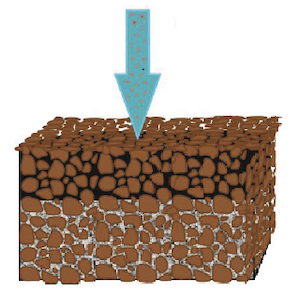Application of physical clogging models to Managed Aquifer Recharge: a review of modelling approaches from engineering fields

All claims expressed in this article are solely those of the authors and do not necessarily represent those of their affiliated organizations, or those of the publisher, the editors and the reviewers. Any product that may be evaluated in this article or claim that may be made by its manufacturer is not guaranteed or endorsed by the publisher.
Accepted: 19 July 2023
Authors
Managed Aquifer Recharge (MAR) sites suffer from the long-lasting problem of clogging. The causes of clogging are physical, biological, chemical and mechanical processes and their complex interaction, with physical clogging being recognised as the predominant process. The intrusion and deposition of particles during water recharge affect the hydraulic properties of the infiltration surface, resulting in a decline in the infiltration capacity of the site over the operating years. Cleaning operations are necessary to restore the original infiltration rates. For this purpose, assessing the risk of clogging can determine the site’s vulnerability and improve the scheme’s design. Numerical models are essential to replicate physical clogging processes and predict the decline in infiltration rates. So far, predictive tools for physical clogging assessment have been missing in MAR literature. Hence, the purpose of this study is to analyse and reorganise physical clogging models from applied engineering fields dealing with water infiltration in natural heterogeneous systems. The modelling approaches are illustrated, starting from the main assumptions and conceptualisation of the soil volume and intruding particles. The individual processes are untangled from the multiple studies and reorganised in a systematic comparison of mathematical equations relevant to MAR applications. The numerical models’ predictive power is evaluated for transferability, following limitations and recommendations for a process-based model applicable to surface spreading schemes. Finally, perspectives are given for clogging risk assessment at MAR sites from modelling and site characterisation. The predictive tool could assist decision-makers in planning the MAR site by implementing cost-effective strategies to lower the risk of physical clogging.
How to Cite

This work is licensed under a Creative Commons Attribution-NonCommercial 4.0 International License.








